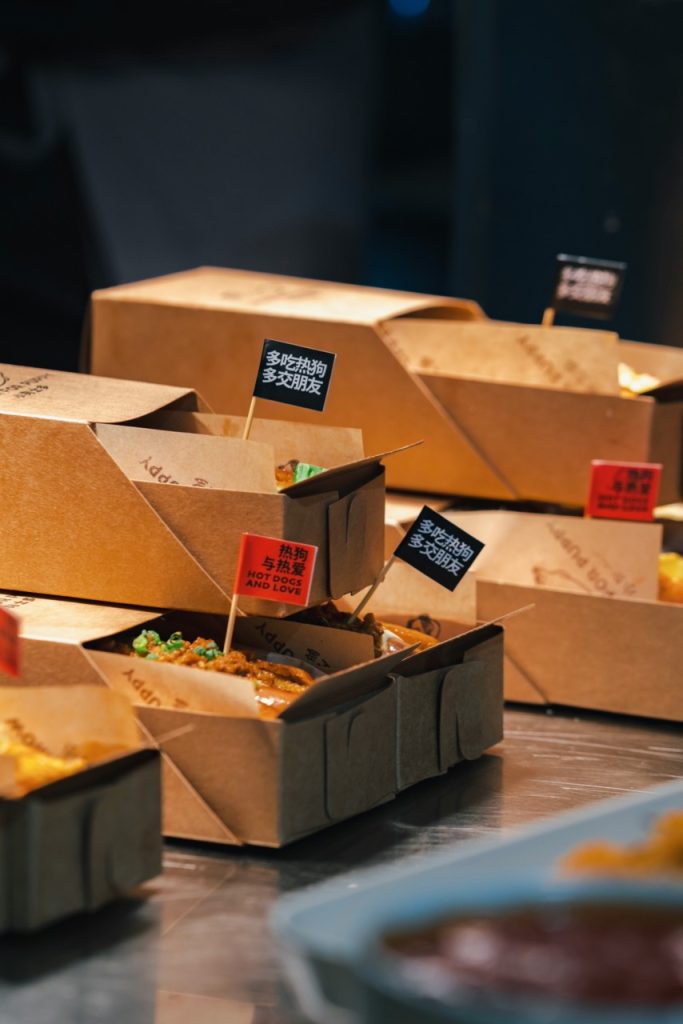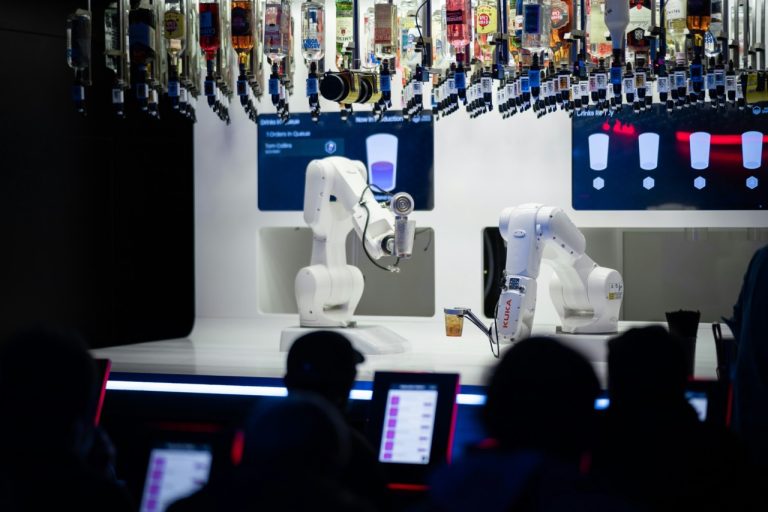
1. Introduction to product safety in the 21st century
Food safety takes center stage in this era of high-tech with technology entering all spheres of life. As a food delivery application development company, technology firm Celadonsoft with a deep understanding of the concerns of the time feels an imperative urge to bring in innovations — food safety AI in this instance — to create stringent food-safety systems.
Problem relevance: main trends and challenges
- More globalized supply chains. Complex logistics and many participants raise levels of exposure to contamination and counterfeiting.
- Increased cases and outbreaks of food poisoning resulting from sanitation violations.
- Increased regulatory and consumer demands for quality, responsiveness and transparency.
- Need to protect data and hold the perpetrators accountable for confirmed breaches

These phenomena create a new environment where conventional control mechanisms fail. Let’s emphasize principal issues food-market stakeholders have to face today:
| Problem | Consequences | Traditional control methods |
| Area of Application | Description | Application |
| Difficulty in Tracking Source | Threats to consumer health | Spot checking and paper auditing |
| Delay in violation detection | Large-scale product recalls | Manual audits and laboratory testing |
| Lack of data transparency | Mistrust of brands and producers | Reports of incomplete picture |
The modern reality calls for a change from being reactive to being proactive. Enter AI — not just detecting incidents but predicting them and preventing them.
IT professionals must also be concerned with product safety.
- Technology Integration. Working with big data, IoT and neural networks — these technologies can help solve great social issues.
- Life-quality impact. Developing efficient AI quality-control systems supports the health maintenance of millions.
- Regulatory challenges. Increasingly stringent regulations create demand for scalable and flexible solutions.
- Cross-industry collaboration. Disruptive projects require IT professionals, agribusiness, regulators and manufacturers collaborating with each other.
Thus, product safety evolves from a mere “food issue” into a complex, multivariable IT product with innovation and precise algorithms. Through subsequent article segments, Celadonsoft describes how new technology reconfigures the business — from harvesting to policy-formulation establishing standards of safety. The safety of food in the 21st century rests as much in the hands of information systems as on the shoulders of the food industry.
The road to a safer tomorrow starts with knowledge of today’s threats and technology solutions — these are what we will discuss.
2. Farm-to-table artificial intelligence in the food sector
Far from a fad and a very real reality, AI-powered reconceptualization of the agro-industrial cycle reconfigures each stage — sowing and cultivation to packaging to last-mile delivery. A post by Celadonsoft describes how a blend of cognitive algorithms and sensor feeds create optimized and secure supply chains, drawing on the company’s food delivery app development services expertise.
Primary AI applications by stage are:
- Sensor and drone intelligence scan the fields in real time and identify threats like pests, plant disease or deficiency in nutrition. This avoids unnecessary usage of pesticides and enhances the quality of raw materials from the start.
- Process optimization in processing applies computer vision and machine learning to identify even minor contamination or imperfections imperceptible by human sight.
- Smart logistics handling reduces the risks of spoilage due to incorrect temperature or delays during transit.
Therefore, AI acts as a “digital inspector,” exposing the flaws at the initial phase. Market sentiment suggests companies utilizing these solutions realize a substantial reduction in returns and complaints — and direct dividends in brand reputation and safety.
3. Automated quality control: neural networks ensuring safety
Viewing quality control as a multi-layered process, AI algorithms operate on every level and aren’t simply checking numbers but learning to recognize complex patterns and anomalies. The key tool in such a situation is neural networks.
Principal application domains encompass:
- Image processing. Convolutional neural networks (CNNs) scan products for stains, damage or foreign bodies, previously labor-intensive work. Automatic control in this manner preserves quality while expanding control.
- Chemical composition analysis. Spectral data are examined by neural networks for anomalies signaling contamination, forgery or even early-stage allergen detection.
- Sensor data real-time monitoring. Predicts storage and transport condition deviations and notifies to facilitate prompt operator action.
- Consumer-feedback systems track social media and reviews to pick up subtle safety issues beyond ordinary checkpoints.
Celadonsoft highlights that neural networks reduce human error and enhance detection accuracy — critical during periods of high production levels and high SKU quantities. Additionally, there is flexibility because models regularly update from new data with respect to evolving conditions and regulations.
Therefore, AI automation transforms complicated checks into straightforward and predictable workflows and optimizes end-user safeguarding.

4. Predictive analytics: risk forecasting in the supply chain
With increasing information density and transmission speeds in modern food production and supply chains, artificial intelligence arrives as the indispensable partner in ensuring product safety and integrity. Celadonsoft boldly asserts predictive analytics as a step beyond simply increasing response to emergent issues — but as a means of seeing into the future and taking corrective steps ahead of time to prevent potential threats from snowballing into crises for end customers and companies in general.
What indeed is predictive analytics for food safety? To begin with, it’s a body of techniques and tools based on processing vast datasets with the help of machine learning and statistical modeling. The goal — to uncover hidden patterns beyond the reach of traditional controls and forecast likely risks. The most critical domains of application are:
- Temperature and storage-conditions monitoring. IoT devices supervise humidity as well as temperature monitoring. Predictive models watch this in real time and notify in the event of any deviation to avoid spoilage before it’s too late.
- Predicting and following the spread of contamination. Where there is contamination by bacteria at a single location, algorithms track supply chains, identify linked batches and anticipate zones of risk. This enables prompt recall of contaminated lots and minimization of impact.
- Optimization of inventory and supply. Depending on historical data, seasonal variations and external factors — weather conditions, transport risks and volatility in the marketplace — systems forecast supply-chain disruptions and suggest alterations beforehand.
Why is predictive analytics possible today? It is due to synergies between a range of emerging technologies: mounting volumes of sensor data, AI capabilities and cloud computing availability. Celadonsoft actively brings together these factors in solutions, preparing IT teams for fast, responsive data processing.
Deploying such systems is as much a strategic as a technical exercise — taking in data from a variety of sources: farms, distributors, regulators. The following represent important steps in AI predictive-analytics implementation in food-safety supply chains:
- Cleansing and collection of data. Data quality and relevance assurance lays the foundation for analytics.
- Model training. Adapting algorithms to industry-specific features: product attributes, regulations, logistics.
- Operational systems integration. Integration of workflows for real-time notification and automated response.
- Model refinement and analysis. Ongoing performance evaluation and adaptation to changed conditions.
Most importantly, beyond any predictive-model performance, there needs to be human judgment. Final decisions need to be made with expert judgment, using AI as a tool to enhance capabilities and accuracy of prediction.
5. Data-driven regulation: how artificial intelligence redefines food-safety policy
AI goes beyond production and operation, transforming the nature of regulation itself. Governments and global organizations handling large volumes of data gain the ability to make even-handed, timely and open decisions based on real data rather than out-of-date conventions or red tape.
Celadonsoft lists several AI impacts in the policy sphere:
- Auditing and inspection automation. Image recognition and data analytics enable factories and warehouses to be remotely monitored and gaps in compliance detected in real time, streamlining compliance automation.
- Dynamic regulation updates. Traditional safety standards lag the real world. AI solutions can adjust benchmarks in response to new evidence.
6. Ethical issues and challenges of AI in food safety
Embedding artificial intelligence in the fabric of the food industry cannot be achieved without considering ethical issues attached to new technology. Celadonsoft realizes this very clearly; the AI application isn’t just a step toward efficacy but also a civic duty. The following are some of the major challenges currently facing the industry.
- Algorithmic transparency. The black-box nature of neural networks means one can’t know why a specific decision was made. With food safety, this has implications because random failures can have serious public-health consequences.
- Protecting data confidentiality. Volumes of information regarding raw materials, suppliers and warehousing conditions are collected. The data must be safeguarded from unauthorized users, especially trade secrets and personal information.
- Accountability for error. Who will be responsible if AI fails and allows harmful products through? Legal frameworks remain in development with a need to establish new standards and rules.
- Access to technology on equal terms. There’s a risk of increased digital gaps between small and large producers. AI solutions must be rendered widely available in order to avoid new obstacles.
- Job effect. The structuring of labor markets changes with automation. Retraining and assistance must be provided to bring about equilibrium between humans and machines.
It requires communication among developers, regulators and users. The mission of Celadonsoft is to create products and also embed ethical guidelines in every stage of development — from algorithm design to final release.
7. Next-generation food-safety technology: innovations and trends
Turning to the future, it’s clear AI will be an integral part of product safety, transforming technological and policy landscapes. What are the key trends that will define this future?
- Higher use of predictive analysis. Preemptive risk identification at an early stage minimizes disruption and averts crises.
- Blockchain and AI integration. The combination of data immutability and transparency with smart analysis will enhance supply-chain trust.
- Hybrid models of regulation. Computerized regulation and surveillance augmented by human review combine accuracy and accountability.
- IoT and edge computing. Bringing compute capacity next to data sources (warehouses, farms) enables real-time processing.
- Self-regulating and adaptive systems. Artificial intelligence supports learning from the environment and from error to provide a basis for dynamic safety management.
- Expanding ethical frameworks via automated audits. Technologies facilitate documenting and analyzing compliance, rendering it less subjective.
Celadonsoft invests in solutions that embody these trends, valuing technical capability as highly as moral responsibility. Our future of secure products lies in the convergence of innovation, responsible policy-making and public trust. We can be this change together — creating apps and infrastructure where safety isn’t an afterthought but a natural part of each step.

8. Conclusion: the path toward a secure future with AI
In the modern day and age of emerging technologies and growing demands for product quality and safety, one can’t overstate the contribution of artificial intelligence in the sector. To small companies or large public entities, AI’s possibilities for transforming food-safety control procedures provide new opportunities. Celadonsoft believes — human and machine intelligence will create truly reliable systems only together.
Let’s outline major directions that, in our opinion, determine the future of food safety with AI:
- Integrating data from disparate sources
It’s not an overstatement to say the power of great solutions lies in the convergence of disparate information — from sensor networks in the field to regulator filings. Today’s AI systems collect, analyze and connect information from supply-chain segments to facilitate risk identification throughout the cycle. - Emphasize algorithmic transparency and explainability
It is not acceptable to use AI when the decision rationale is unknown, particularly in as critical a field as food safety. Our organization therefore works toward creating explainable AI solutions that make algorithms transparent and responsible to humans. - Industry and regulator cooperation
Effective implementation of AI can be facilitated by synchronized government-agency and business activities. Collective standards and data-exchange systems will allow timely responses to threats and joint development of control systems. - Expansion of predictive analytics usage
Prevention and prediction always trump correction. Advanced machine-learning algorithms will notify you of potential breaches in advance — whether these be outbreaks of contamination or process breaches. - Accountability and ethical considerations
The application of AI to food safety cannot disregard data privacy, consumers’ rights and developers’ responsibility. Celadonsoft strongly supports fair, ethical control and information-protection mechanisms.
Summarizing — the future in which AI plays a full part in food-safety policymaking has already begun. Our team views this constant push toward even more open, faster and accurate solutions to make daily consumed items truly safe as the future. We invite IT, food-business and regulation specialists to join forces with us in establishing an ecosystem where innovation works for the people and for their welfare. Celadonsoft leads the curve of change, bringing forth new ideas and technology capable of changing present mind-sets. We must overcome challenges together — this alone promises a tomorrow that is sustainable, secure and technology-led.


